
New Photos
November 26, 2006
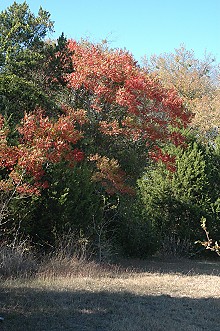 |
|
| A week ago, the largest flameleaf sumac on the place--and the last to turn--was a few days from peaking in the corner of the SW meadow. | |
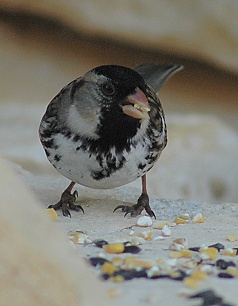 |
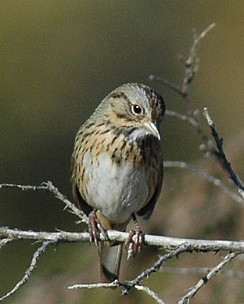 |
| Meanwhile, the bird explosion--the annual in-migration of winter residents--continued. Compared to last week's, this Harris's sparrow has more black on the face and a different breast pattern. At this moment, its beak is full of corn fragments, but in other pictures, it was hulling and eating sunflower seeds. One reason I take multiple pictures of birds eating is to see what they prefer to eat...and thus learn what kinds of feed to provide. | In late afternoon, a Lincoln's sparrow looks pensive for the moment. |
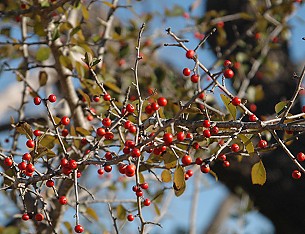 |
|
| Meanwhile, the possumhaw berries are turning red. They are not as thick as other years, partly from the drought and partly because (also due to drought) they're being eaten earlier in the season. Possumhaw is a holly that drops its leaves in winter, leaving the bright berries. | |
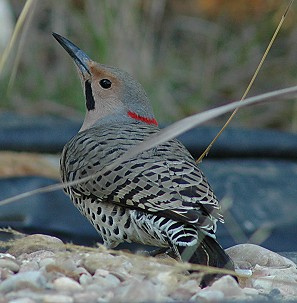 |
|
| Here's another picture of the flicker...definitely a male by its black malar stripe and the red mark on the back of its neck. You can also see the "water line" on its beak--it had just had a good sip. | |
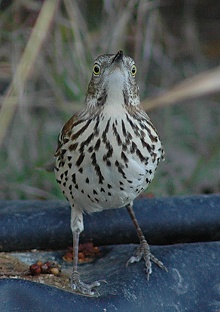 |
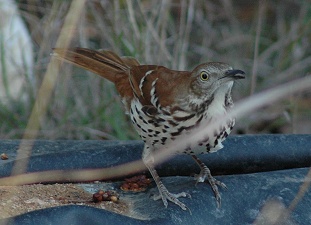 |
| Finally, the week's "big catch" in the bird department--a brown thrasher. We have them only in winter; they're shy and this is the first one I've been able to photograph. It appeared at Owl Water on Thanksgiving afternoon, in front of a small group of visitors. This "Pop-eye" view shows the elegant striping of its breast. | And here is the rest of the bird, with its warm rufous back and tail, and white wing-bars. |
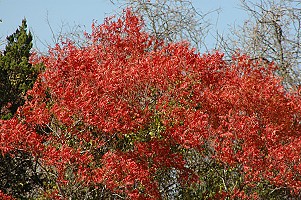 |
|
| The big flameleaf sumac peaked right around Thanksgiving, earning its name and proving that Texas does have some fall color...when people don't call it "brush" and bulldoze it away. | |
![]()

